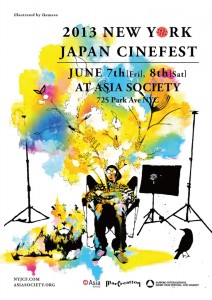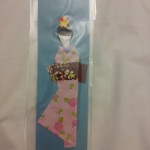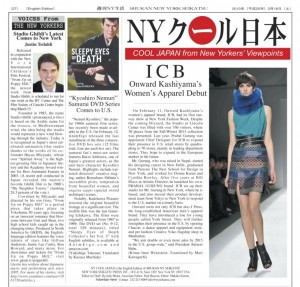JQ Magazine: Film Review – JAPAN CUTS 2013 at Japan Society
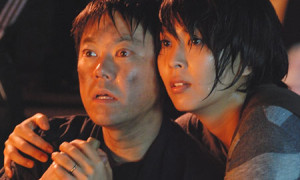
Dreams for Sale premieres July 13 at Japan Society in New York as part of their annual JAPAN CUTS film festival. (© 2012 Dreams for Sale Film Partners)
By Lyle Sylvander (Yokohama-shi, 2001-02) for JQ magazine. Lyle is entering a master’s program at the School of International and Public Affairs at Columbia University (MIA 2013) and has been writing for the JET Alumni Association since 2004. He is also the goalkeeper for FC Japan, a New York City-based soccer team.
Now in its seventh season, the JAPAN CUTS 2013 film festival runs from July 11-21 at Japan Society in New York and features less mainstream and more art house fare than in festivals past. JQ was able to screen three films from this year’s festival: Dreams for Sale (Yume Uru Futari), Helter Skelter (Heruta Sukeruta) and A Story of Yonosuke (Yokomichi Yonosuke).
Dreams for Sale, the most affecting of the three, tells the story of a young couple, Kanya (Sadao Abe) and Satoko (Takako Matsu), who find themselves in dire straits when their restaurant burns down to the ground. They soon realize, however, that the situation allows them to seek sympathy and romance money out of lonely singles that they encounter. This morality tale is directed in a naturalistic style by Miwa Nishiwaka. Within the director’s moving frame, the two main protagonists are allowed to express themselves both fully and in nuance as they work in tandem to bilk yen out of the unsuspecting victims.
What makes the film work so well is Nishikawa’s matter-of-fact stylistic depiction; she simply allows events to unfold naturally as the camera unobtrusively records them. At first, Kanya and Satoko’s cynical schemes have a darkly comic undertone, but gradually we, as the audience, begin to see the subtle changes that the couple undergoes as they begin to first doubt the morality of what they are doing and then doubt the strength of their own marriage and relationship. As in many great tragedies, this inner turmoil spills out into the external world as their actions have unpredictable repercussions beyond their control and affect unintended innocent victims.
Justin’s Japan: Nippon in New York — Hot Films, Magic Gardens and Cool Jazz
By JQ magazine editor Justin Tedaldi (CIR Kobe-shi, 2001-02) for Examiner.com. Visit his Japanese culture page here for related stories.
After an unusually chilly spring, it’s finally starting to feel like summer. Enjoy some seasonal events this month that celebrate both the sunny and the dark side of life and nature.
June 8
Asia Society, 725 Park Avenue
$7 members, $9 students/seniors, $11 nonmembers
Returning for its second annual event at Asia Society and co-presented with Mar Creation, Inc, The New York Japan CineFest (NYJCF) will screen more than a dozen independent films in two days, kicking off Friday (June 7) with eight short films by U.S. based filmmakers with a reception to follow sponsored by Sapporo Beer. “New York Japan CineFest is the first independent Japan-themed film festival in New York,” says Hiroshi Kono, owner of Mar Creation. “It’ll soon be a trend that non-Japanese film directors make films with Japanese cast in Japanese language just like sushi and ramen became the world nations’ daily meals.”
Culture Project, 45 Bleecker Street
$30 (use promo code TNCHTT25 for $25 tickets while supplies last)
Following a sold-out run produced by the Epic Theatre Ensemble in November, writer Jeanne Sakata and director Lisa Rothe’s one-man show returns to close out 10th annual soloNOVA Arts Festival. 2013 Drama Desk nominee Joel de la Fuente stars in the real-life story of first-generation Japanese American Gordon Hirabayashi, who posthumously received a Medal of Freedom, the nation’s highest civilian honor, in May 2012. During World War II in Seattle, University of Washington student Hirabayashi agonizes over U.S. government orders to forcibly remove and imprison all people of Japanese ancestry on the West Coast.
For the complete story, click here.
WIT Life #233: Live Your Dream
WIT Life is a periodic series written by professional Writer/Interpreter/Translator Stacy Smith (Kumamoto-ken CIR, 2000-03). She starts her day by watching Fujisankei’s newscast in Japanese, and here she shares some of the interesting tidbits and trends together with her own observations.
Last month I had the opportunity to interpret for Mr. Hakubun Shimomura, the current Minister of Education, Culture, Sports, Science and Technology (MEXT or 文部科学省) during his time in Washington, DC. His schedule included a variety of official visits and meetings, including to a charter school and with various U.S. government agencies, but to me the most personally significant part of working with him was when he addressed the local JETAA chapter (In addition to MEXT, JET is carried out by the Ministry of Internal Affairs and Communications (MIC or 総務省), the Ministry of Foreign Affairs (MOFA or 外務省) and the Council of Local Authorities for International Relations (CLAIR or 自治体国際化協会).
Minister Shimomura provided opening remarks at a reception before the screening of a documentary called Live Your Dream, which tells the story of JET Taylor Anderson who lost her life in the tsunami two years ago. Also featured in this film is the other JET who passed away during this natural disaster, Montgomery (Monty) Dickson. Family members of both Read More
Justin’s Japan: Studio Ghibli’s Latest Comes to New York
By JQ magazine editor Justin Tedaldi (CIR Kobe-shi, 2001-02) for Shukan NY Seikatsu. Visit his Examiner.com Japanese culture page here for related stories.
Released in conjunction with the New York International Children’s Film Festival March 15, From Up on Poppy Hill, the newest work from Studio Ghibli, is now playing at four locations in New York City.
Founded in 1985, the name Studio Ghibli (pronounced ji-blee) is based on the Arabic name for the sirocco, or Mediterranean wind, the idea being the studio would represent a new wind blowing through the industry. Today it is recognized as Japan’s most celebrated animation film studio thanks to the works of its co-founder Hayao Miyazaki, whose own Spirited Away is the highest-grossing film in Japanese history and the Academy Award winner for Best Animated Feature in 2003. (A recent poll conducted in Japan revealed the nation’s favorite Ghibli film to be 1988’s My Neighbor Totoro, claiming 24.3 percent of the vote.)
Co-written by Miyazaki and directed by his son Goro, From Up on Poppy Hill is a period piece that takes place in Yokohama 50 years ago, focusing on an innocent romance that blossoms between Umi and Shun, two high school kids caught up in the changing times. Produced in North America by GKIDS, the English-language edition features the voice talents of stars like Gillian Anderson, Jamie Lee Curtis, Ron Howard, and many more.
For showtimes and tickets for From Up on Poppy Hill, visit www.gkids.tv/poppyhill.
JQ Magazine: Film Review – ‘Live Your Dream: The Taylor Anderson Story’

“Laced with emotional reflections, vivid photos and jovial home movies, the film walks the viewer through Taylor’s 24 years on earth and untimely end caused by the Great East Japan Earthquake and Tsunami of 2011.” (Global Film Network Inc.)
By Renay Loper (Iwate-ken, 2006-07) for JQ magazine. Renay is a freelance writer and associate program officer at the Japan Foundation Center for Global Partnership. Visit her blog at Atlas in Her Hand.
Directed by renowned filmmaker and founder of Global Film Network Regge Life, Live Your Dream: The Taylor Anderson Story is Life’s first documentary about a loss.
Best known for his features like Doubles (about Japan and America’s intercultural children), After America…After Japan (about the migration of Americans to Japan and Japanese to America) and Struggle and Success: The African American Experience in Japan, Life opens the window for the viewer to glimpse the life of Taylor Anderson (Miyagi-ken, 2008-11) through personal accounts from her loved ones. Laced with emotional reflections, vivid photos and jovial home movies, the film walks the viewer through Taylor’s 24 years on earth and untimely end caused by the Great East Japan Earthquake and Tsunami of 2011. In light of the tragedy, the film sends a message of hope, optimism and encouragement for all to follow their hearts.
The film is divided into chapters, beginning with the first, “She Took Her Time.” Jean Anderson, Taylor’s mother, reveals how in everything Taylor did, she did it at her own pace, including her birth: she was 11 days late. According to her father, Andy Anderson, Taylor grew up inquisitive, interested and easygoing, never letting anyone influence her decisions. Julia Anderson-Kerr and Jeffrey Anderson (Taylor’s sister and brother, respectively) shared what it was like to grow up with such a peaceful and patient sibling.
From as early as they could remember, Taylor was into reading, exploring and having fun. Growing up near Richmond, VA, she was first introduced to Japanese at Millwood Elementary School. Her teacher exposed her to the language, artifacts and clothing of Japan at an early age, and from that point on she was hooked. Unfortunately, when she moved on to St. Catherine’s High School, Japanese was not an option, so she continued to study on her own.
It wasn’t until her college years at Randolph-Macon College in nearby Ashland that Taylor had the opportunity to visit Japan. She traveled to Tokyo for a January course designed to expose students to the history of the city. Later that summer, Taylor taught at a Japanese language academy, where she was adored by all. It was because of Taylor’s contagious zeal for Japan that her childhood friends and classmates became interested in the country and culture as well. She exposed them to anime, manga and the films of Hayao Miyazaki, inspiring some of them to travel to Japan and explore it for themselves.
Tohoku Tomo: JET alum returning to Japan to document ongoing JET alum and international relief efforts in Tohoku
Wesley Julian (Miyagi-ken, 2008-10) is heading to Japan with a small film crew to make a video that will share the story of JET alums and others who have made and continue to make a difference in Tohoku, Japan.
The project is called Tohoku Tomo and just launched a Kickstarter campaign. For more information and to donate, go to:
http://www.kickstarter.com/projects/1283108911/tohoku-tomo
In the video below, Wesley, who spoke at his students’ graduation on 3/11 just before the earthquake struck, explains the project and its significance. He currently works for the Japanese Consulate in Chicago, though the Tohoku Tomo project is something he is doing independently of his work.
***********
Justin’s Japan: Nippon in New York – From ‘Edo Pop’ to ‘Poppy Hill’
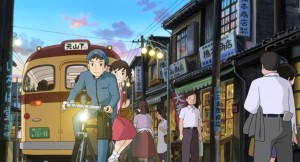
“From Up on Poppy Hill,” the latest film from Studio Ghibli, premieres in New York March 16. (©2011 Chizuru Takahashi/Tetsuro Sayama/GNDHDDT)
By JQ magazine editor Justin Tedaldi (CIR Kobe-shi, 2001-02) for Examiner.com. Visit his Japanese culture page here for related stories.
Tucked between Oscar and cherry blossom season, March offers an unmissable array of concerts, performances and film premieres, along with a special gathering to mark the two-year anniversary of the Tohoku earthquake and tsunami.
This month’s highlights include:
Sunday, March 3, 6:45 p.m.
Exploring the Road of Shamisen – Koto Workshop and Concert
Still Mind Zendo, 37 West 17th Street
$15 advance, $18 at the door
For reservations, email contact[at]marcreation.com or call 917-400-9362
In the latest workshop of the Spring Traditional Japanese Musical Instrument Series, shamisen specialist Yoko Reikano Kimura will demonstrate the vast 400 years of shamisen repertoire and explore the infinite possibilities of the instrument. Shamisen was brought to Japan through the Silk Road and since then it was popularized among samurai to ordinary citizens. But in today’s cosmopolitan age, new shamisen music continues to thrive.
March 6-9
The Bach Variations: Bach and Mendelssohn
Avery Fisher Hall, 10 Lincoln Center Plaza
$41-$123
In its first-ever Bach Festival, a kaleidoscopic three-week celebration of the depth and breadth the man the New York Times named the greatest composer of all time, Kobe-born conductor and harpsichordist Masaaki Suzuki leads five vocalists along with his own Bach Colleguim Japan and Yale Schola Cantorum with his own unique approach, combining his perspective with the virtuosity of the New York Philharmonic. On the program are Bach’s “Motet No. 1: Singet dem Herrn” and “Magnificat,” along with Mendelssohn’s :Magnificat in D Major” and “Christus.”
March 9-June 9
Edo Pop: The Graphic Impact of Japanese Prints
Japan Society, 333 East 47th Street
$12 general admission, $10 students and seniors, Japan Society members and children under 16 free
Edo Pop playfully juxtaposes classic ukiyo-e prints from such masters as Katsushika Hokusai and Utagawa Hiroshige with contemporary works inspired by these artists and their works. Delve into alluring worlds created by the power of Edo period and contemporary popular culture in which change is the only constant. Organized by the Minneapolis Institute of Arts, with the contemporary art selections curated for the New York presentation by Miwako Tezuka, Ph.D., Director, Japan Society Gallery.
For the complete story, click here.
WIT Life #221: MoMA’s Avant-Garde Tokyo
WIT Life is a periodic series written by professional Writer/Interpreter/Translator Stacy Smith (Kumamoto-ken CIR, 2000-03). She starts her day by watching Fujisankei’s newscast in Japanese, and here she shares some of the interesting tidbits and trends together with her own observations.
Last month MoMA introduced an exhibition called Tokyo 1955-1970: A New Avant-Garde, which looks at the creations that emerged from this tumultuous period. It features around 200 works of various media, such as paintings from Yayoi Kusama and photographs from Daido Moriyama, as well as pieces from lesser known artists. They all offer social commentary and many are confrontational, some via explicitly sexual themes such as Tetsumi Kudo’s “Philosophy of Impotence” installation, which occupies a large section of the exhibit.
Another interesting work is Hiroshi Nakamura’s “Circular Train A,” which features uniformed schoolgirls as cyclops, further fetishizing this symbol of sexuality in Japanese society. In this painting and others, the influence on modern manga and anime is undeniable. Fun fact is that Yomiuri Shimbun had served as the sponsor of a Tokyo exhibition of post-war artwork, but withdrew the following year as the content had become too controversial. The exhibition will run through February 25 and various lectures and gallery talks are offered, so make sure to check it out.
In conjunction with this exhibition, a film series called Art Theater Guild and Japanese Underground Cinema: 1960-1986 is taking place. On Friday night I had the honor of Read More
NHK TV feature on “Live Your Dream: The Taylor Anderson Story”
NHK TV (English edition) recently aired a feature story on the premier screening of “Live Your Dream: The Taylor Anderson Story,” a documentary produced by filmmaker Regge Life.
Here’s the link to the video: http://www3.nhk.or.jp/nhkworld/english/movie/feature201211270915.html
WIT Life #220: Wonderful Single Life/Going My Home
WIT Life is a periodic series written by professional Writer/Interpreter/Translator Stacy Smith (Kumamoto-ken CIR, 2000-03). She starts her day by watching Fujisankei’s newscast in Japanese, and here she shares some of the interesting tidbits and trends together with her own observations.
As I shared in my last post, one of the best parts of being here in Japan is the chance to catch up on dramas when the work day is done. When I’m at home I try to keep up to date on them via the Internet, but it’s just not the same as watching them in prime time. Two of my current favorites are tonight’s 「ゴーイング・マイ・ホーム」 (Going My Home) and Thursday night’s 「結婚しない」 (Wonderful Single Life; literally Won’t Get Married).
I greatly enjoy the latter as the main character is a 35-year old woman whose single status is a source of both stress and liberation. The supporting roles feature her female contemporaries as well as younger and older friends, all in various work and personal situations. It is an interesting commentary on the lives of women in modern Japanese society, and I am eager to see Read More
WIT Life #219: Yakusho Koji’s newest flick
WIT Life is a periodic series written by professional Writer/Interpreter/Translator Stacy Smith (Kumamoto-ken CIR, 2000-03). She starts her day by watching Fujisankei’s newscast in Japanese, and here she shares some of the interesting tidbits and trends together with her own observations.
I’m currently in Japan on an interpreting assignment, and am loving eating washoku and getting my fill of Japanese tv on a daily basis. I’m also happy to be able to catch up on Japanese pop culture while I’m here, and I recently caught a Yakusho Koji movie out in theaters now. I’ve written about how much I enjoy Yakusho’s work as well as having the chance to meet the man himself, and his latest film did not disappoint.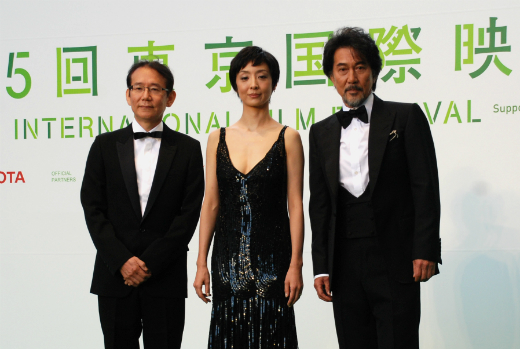
Masayuki Suo of “Shall We Dance” fame is the director of 「終の信託」 (Tsui no Shintaku, or “Trust in the End”), which reunites the two stars of that movie. Yakusho appears alongside Tamiyo Kusakari, who played his dance instructor in the former film, and they are pictured here along with Suo. (The fabulous supporting cast includes Tadanobu Asano as Orii’s vile lover and Takao Ozawa as the intimidating prosecutor).
Their collaboration 16 years later was worth the wait. Yakusho plays chronic asthma patient Egi who is assigned to Kusakari’s internist Orii at the hospital where he receives periodic treatment. Over time his attacks get worse and his visits become more frequent, and he begins to rethink the value of treatment considering the costs and Read More
Regge Life documentary about Taylor Anderson and Monty Dickson to premiere 11/9 in DC area
Via JETAA DC President Leigh Ann Mastrini (Hyogo-ken, 2006-08):
On November 9th will be the premiere of Regge Life’s documentary film about March 11, Taylor Anderson, and Monty Dickson. Click the link below for more information:
http://www.kickstarter.com/
The film is open to the community, with a suggested donation of $20 when you register. A small group of JETAA DC alumni will be driving down from DC between 2PM – 3PM.
Justin’s Japan: Interview with ‘Manga! Manga! The World of Japanese Comics’ author Frederik L. Schodt

“I grew up overseas in several different countries, and I’ve always enjoyed different cultures. And for me, that was exactly the way Japan appeared: it was always interesting, and it still is always interesting. There’s always things to learn.” (Courtesy of Stone Bridge Press)
By JQ magazine editor Justin Tedaldi (CIR Kobe-shi, 2001-02) for Examiner.com. Visit his Japanese culture page here for related stories.
Frederik L. Schodt first traveled to Japan in 1965 as a teenager, and since the early ’80s he has written numerous books about Japanese culture both popular and obscure, including the landmark Manga! Manga! The World of Japanese Comics, the first substantial English-language work on the art form. Schodt also has translated a wealth of books and manga series (many by his late friend, the “god of comics” Osamu Tezuka), and in 2009 he was awarded the Order of the Rising Sun, Gold Rays with Rosette for his contribution to the introduction and promotion of Japanese contemporary popular culture.
Out Nov. 13 is his newest book, Professor Risley and the Imperial Japanese Troupe, the true story of “Professor” Richard Risley Carlisle, an American who introduced the Western circus to Japan in 1864, and in turn gave many Americans their first glimpse of the East when he took his “Imperial Japanese Troupe” of acrobats and jugglers on a triumphant tour of North America and Europe, stirring a fascination with all things Japanese that, Schodt says, eventually led to today’s boom in manga and anime.
In part one of this exclusive, wide-ranging interview, I spoke with Schodt about his fascination with the late 19th century, his relationship with contemporary pop culture icons like George Lucas, and the story behind his middle initial, which is colorfully connected to the events of the film Argo.
It’s been more than five years since the release of your last book, The Astro Boy Essays. What else have you been up to since then?
I’ve actually gone through this and done some rough calculations, but it seems to take me about five years between books. I’ve been doing this same sort of thing that I always do, which is a mix of writing books and translating and then also working as a conference interpreter. For different periods, the weight and the ratio changes, but the mix is pretty much the same. And I’ve been working on the book of Professor Risley and the Imperial Japanese Troupe, I guess, for the last two or three years doing research. But it’s been a lot of fun, I have to say—it’s been one of the most fun books I’ve worked on in a long time.
What are some developments in manga/anime/Japanese pop culture in the U.S. that you feel has moved in a positive direction? At the same time, what things are you a bit critical of in the way they were handled?
I think it’s wonderful that a popular culture from another country such as Japan developed such a large fanbase in the United States, and that was a real surprise to me. I always hoped that people would take more notice in Japanese manga and anime, because I thought they were such an interesting manifestation of popular culture that had been long overlooked in the United States. But I never imagined that both of those entertainment media would become so big and so entrenched in the United States in terms of the fanbase, so that’s been wonderful to see.
It seems like the biggest development in recent years has been the cosplay phenomenon—that’s become a real part of the lingo here now.
That’s right. And I think cosplay in the United States is a little different, and in fact I think the whole fandom in the United States has assumed sort of American characteristics, so it’s developing on its own in new directions, and it’s kind of wonderful to see. I go to some of the larger cons every once in a while, and I really enjoy seeing how young people are interpreting this cultural phenomenon developed in Japan, although I have to say that cosplay is really indirectly inspired by the masquerades and the costume competitions that started in the United States in the sci-fi comic book community. So it’s very interesting. It’s this sort of cultural interchange that I’ve always been fascinated by where you have these two countries that are kind of reflecting each other and sending influences back and forth to each other, and interpreting a phenomenon in slightly different ways.
For the complete interview, click here.
JQ Magazine: Film Review – ‘Love Strikes!’ Twice at JAPAN CUTS Film Festival
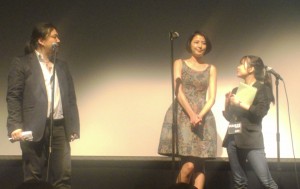
‘Love Strikes!’ star Masami Nagasawa, center, with JAPAN CUTS festival curator Samuel Jamier at Japan Society, July 14, 2012. (Shinobu Torii)
By Rick Ambrosio (Ibaraki-ken, 2006-08) for JQ magazine. Rick manages the JET Alumni Association of New York (JETAANY)’s Twitter page and is the creator of the JETwit column Tadaima!
Love Strikes! had its encore screening July 22 at Japan Society’s annual JAPAN CUTS film festival, and I can tell why they had to run it a second time: a main character with a wide range, beautiful girls, and the hilarious situations he gets himself into with them (though the funny stuff is a little frontloaded, but we’ll get to that).
Hitoshi Ohne’s Love Strikes! (or Moteki 「モ テキ」) is based on a manga of the same name and is the sequel to the popular television series. The main character, Yukiyo Fujimoto (Mirai Moriyama) is a young man entering middle age and finding his luck with women wanting. From out of nowhere, he has his moteki, or time of great popularity with women of the opposite sex, which is said to happen to a man just three times in his life.
The movie’s events find us after his first moteki, with Yukiyo wishing for another shot with a great girl. That great girl’s name is Miyuki (Masami Nagasawa), whom Yukiyo makes a connection with over Twitter. We then see our introspective thirty-something hero chasing her all over Japan, making laughs, breaking hearts, and learning through the whole process.
Jen Wang (Miyagi, 2008-09) is a lab tech in Dallas and a staff writer for the Japanese music website Purple SKY. Her love of cosplay and her junior high school students inspired the name for her own Japanese pop culture blog, Hibari-sensei’s Classroom.
Ace Attorney (known as Gyakuten Saiban in Japan) made its Texas debut at the 2012 Asian Film Festival of Dallas. Unlike most of my fellow audience members at the sold-out closing night screening, I was neither a fan of the Phoenix Wright video games nor a fan of director Takashi Miike. I was, however, curious about the franchise that spawned hoards of cosplayers shouting “Objection!” across a con floor and a huge fan of the movie’s two stars: Hiroki Narimiya and Takumi Saito. The trailer promised an intense, over-the-top courtroom drama. What I didn’t expect was to be laughing for the majority of the film as well.
Ace Attorney takes place in the “near future”, in which people have anime hair and punny names and courtrooms employ Stark Industries holographic technology. Court cases must be settled in three days in a reality TV-like format. Phoenix Wright (Narimiya) is a rookie defense attorney who after nearly choking on his first trial, finds himself entangled in two big cases. The first deals with the murder of his mentor Mia Fey (Rei Dan) and the wrongful accusal of her sister Maya (Mirei Kiritani). Wright battles—and that is the best term to describe the courtroom showdown—Miles Edgeworth (Saitoh), a prosecutor whose ruthless tactics have won him admiration but not a lot of allies. Edgeworth is later framed for murder, and Wright has to not only solve the mystery but face the undefeated Manfred von Karma (Ryo Ishibashi).
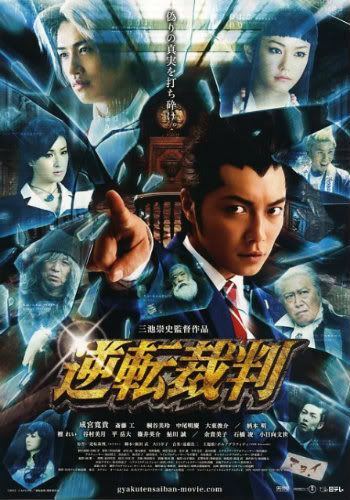
To read the rest of the review, click here.

